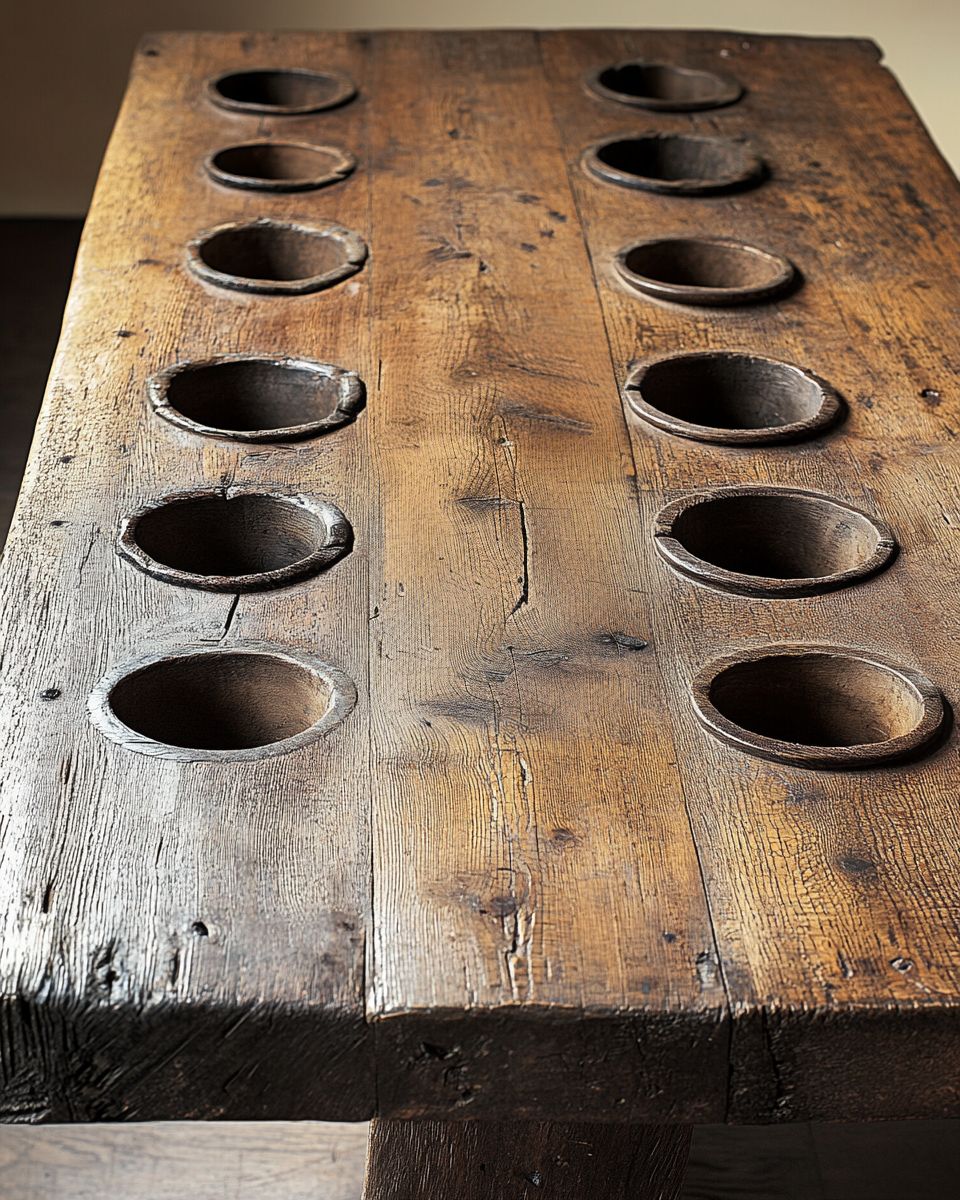ADVERTISEMENT
Absolutely! Here’s an engaging, informative article for that fascinating piece:
🪵 Mysterious Antique Find: A Large Wooden Table with 12 Built-in Bowls — What Was It For?
If you’ve stumbled across or inherited a large antique wooden table with 12 built-in wooden bowls, you’re probably scratching your head in curiosity—and you’re not alone. One such table, purchased in the Netherlands and dating back to 1893, has piqued the interest of antique lovers, historians, and curious collectors alike.
This unusual piece isn’t just a beautiful relic—it’s also a glimpse into the social and domestic customs of the past. But what exactly was its original purpose?
Let’s dive into the mystery and explore the history, potential uses, and cultural significance behind this unique furniture piece.
🔎 What We Know: The Table’s Features
- Material: Solid wood, likely oak or walnut, common in 19th-century European craftsmanship
- Design: Large rectangular or circular table
- Built-in bowls: 12 round, recessed wooden compartments evenly spaced into the tabletop
- Origin: Purchased in the Netherlands
- Date: Inscribed or dated 1893
These details give us a few intriguing clues.
🇳🇱 Dutch Heritage and Communal Traditions
During the late 1800s, communal dining and working were common in both Dutch farmhouses and religious communities. A table like this, with multiple inlaid bowls, could have been used for:
🍲 1. Communal Eating
Each bowl may have been designated for a specific person in a family or group setting—think monasteries, workhouses, or boarding schools, where meals were served uniformly. The bowls kept portions organized, possibly even heated with warm stones placed beneath.
🌾 2. Agricultural Use
Another theory: this table may have belonged to a cheese-making, grain-sorting, or herb-drying operation. The bowls could have been used to sort, soak, or mix ingredients, making it a practical tool in food processing or apothecary work.
🧼 3. Washing Station or Prep Table
There’s a chance the bowls were used for washing vegetables or utensils—especially if the table was located near a hearth or water source. In this case, it would have been a multi-purpose station for cleaning, prepping, and sorting.
🔮 Symbolic or Ceremonial Use?
Given the precision and uniformity of the bowls, some speculate a religious or ritualistic use. Twelve is a significant number in many spiritual contexts (think 12 apostles, 12 months, 12 tribes), so it’s possible the table served as a:
- Communal prayer table
- Ceremonial gathering space
- Teaching or meditation table in a cloister, convent, or philosophical group
This use would explain the care in craftsmanship and symmetrical
